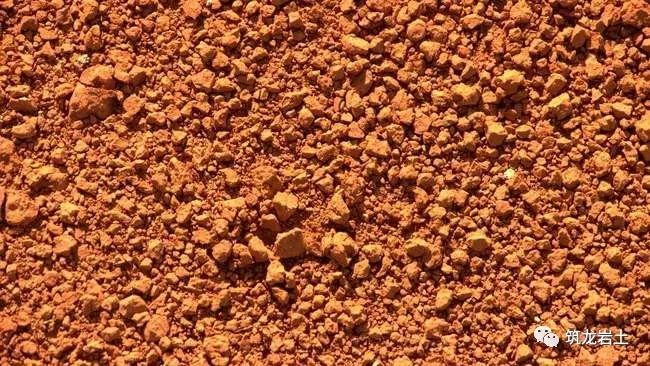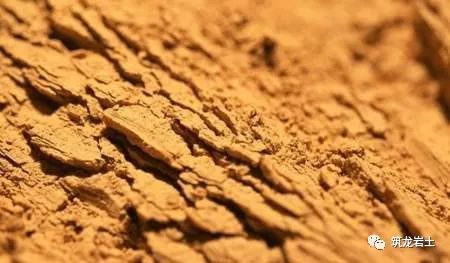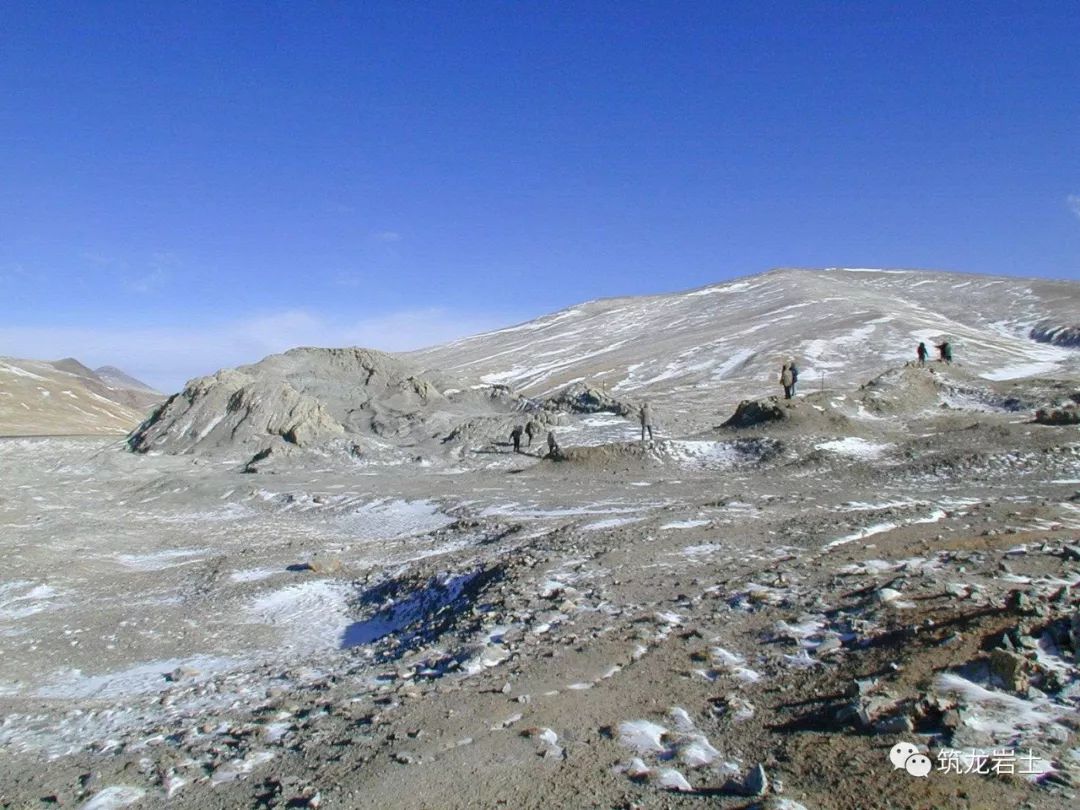【Excerpts】The solution to the three difficult soil layers of wet loess, frozen soil and expansive soil!
Browse services
- Petroleum and Gas
- 【Excerpt】High pressure jet grouting construction technology
- 【Excerpt】How to construct slope anchor cable?
- HDL-60S multi-function drilling rig shipped to Singapore
- 【Excerpt】Why do we need to test piles before pile foundation construction?
- We are the one-stop construction problem solver
- 【Holiday arrangement】Dragon Boat Festival
- 【Excerpt】The "Seven-Character Guideline" for Ground Treatment: A Comprehensive Interpretation!
- 【Excerpt】What is the difference between cement mixing pile and high pressure jet pile?
- 【Construction Case】HDL-200C top drive drilling rig for water stopper curtain of overseas dam
- 【Excerpt】What to do with a broken pile
- Holiday arrangement
- Our Drilling Rig: Client Success Story
collapsible loess foundation
Ⅰ. Characteristics and distribution of the loess species
Loess is a quaternary sediment, with a series of internal material components and external characteristics, different from other sediments of the same period.
Loess has all of the following characteristics:
1. The color is mainly yellow, brown yellow, sometimes in a gray yellow;
2. The particle composition is mainly powder particle (0.05-0.005mm), the content is generally more than 60%, almost no particle size is greater than 0.25mm particles;
3. The pore is relatively large, generally about 1.0;
4. Rich in calcium carbonate salts;
5. Vertical joint development;
6. Generally have large pores visible to the naked eye.
When one or several of the characteristics of the missing is called loess soil.
Classification of loess
Loess is divided into primary (or typical) loess and secondary loess according to its origin. It is generally believed that the non-stratified wind-formed loess is the primary loess. The primary loess formed by water erosion, transport and sediment with more sand grains and fine grains is called secondary loess
The distribution of loess
Loess is widely distributed, covering an area of 13 million square kilometers, accounting for about 9.3% of the total land area. The proportion of loess area covered by all continents in the world is 7% in Europe, 5% in North America, 10% in South America and 3% in Asia. In addition, it is also scattered in Australia and North Africa.
The distribution area of loess in China is 635,280 square kilometers, accounting for about 4.9% of the total distribution area of loess in the world, mainly distributed in north latitude 33-47 degrees, and the most developed between 34-45 degrees, belonging to the arid and semi-arid climate type.
The distribution area of collapsible loess in China accounts for about 60% of the total distribution area of loess in China, which is 270,000 square kilometers. Most of them is in the middle reaches of the loess, starting near the Great Wall in the north, reaching the Qinling Mountains in the south, from Wushaoling in the west to Taihang Mountain in the east, namely between north latitude 34-41 degrees and east longitude 102-114 degrees.
The collapsible loess is generally covered in the non-collapsible loess layer, the thickness is larger in the west of Liupan Mountain, up to 30 meters, the east of Liupan Mountain is slightly thin, such as the Fen Weihe Valley is mostly a few meters to ten meters, and then east to the west of Henan, and the non-collapsible loess is located between the collapsible loess layer.

Ⅱ. The causes and influencing factors of loess subsidence
Various different arguments on the cause and mechanism of loess subsidence can be summarized as internal and external causes. The internal cause is mainly due to the material composition of the soil itself (particle composition, mineral composition and chemical composition) and its structure, while the external cause is the role of water and pressure
1. The hair tube hypothesis
Terzaghi It points out that when the discontinuous water in the wet sand soil accumulates at the particle contact point, the surface tension at the junction of water and air in the pores of the adjacent particles pulls the soil particles together. After flooding into the soil, the surface tension disappears, and the sand collapses. Some scholars have used this view to explain the collapsible subsidence of loess, which was later opposed. J.G.Dudley It is believed that capillary pressure is an important factor for the formation of fine particles and flocculation particles in loess. The capillary role in loess exists, but it is questionable as the main cause of subsidence. Chang Baoqi once made specimens with air-dried disturbed soil samples. Although it destroyed the capillary channel and eliminated the effect of the bending surface, it still has a great collapsibility.
2. Salt-soluble hypothesis
Large amounts of soluble salts are present in the loess. When the water content of loess is less, the soluble salt is in the microcrystalline state, attached to the particle surface, and plays a certain cementing role. This cementing effect is a part of the cohesion of loess reinforcement. After soaking by water, the soluble salt solves, and the strength of this part is lost, thus resulting in subsidence.
The content of soluble salt in collapsible loess in China is less, which is not the main part of the reinforcement cohesion. Although the content of insoluble salt is high, its dissolution is very slow. Therefore, many people believe that the dissolution of soluble salt is not the main cause of subsidence.
3. Colloid deficiency theory
It is considered that the collapsibility of loess is inherent to soil containing less than 0.05mm particles less than 10%. This soil lacks a colloid part; if there is a significant number of colloids, expansion can prevent collapsible. Zhu Haizhi believed that when the viscosity content was greater than 15-20%, the loess was not collapsible, but found that the loess clay content in the secondary terrace on the north bank of Lanzhou West Basin was greater than 30%, but the collapsible was strong.
4. Water film wedged into said
The binding water film wrapped on the surface of the fine particles (mainly particles) is generally very thin, and the electrostatic attraction of the Yin and cations dissolved in them is strong, which connects the negatively charged particles on the surface to form a certain condensation strength. When the water enters the soil, the combined water film becomes thicker, separating the firmly connected particles like a wedge, expanding the surface of the soil particles, increasing the volume, weakening the gravity, reducing the condensation strength, and thus producing collapsible water. The water film wedge can better explain the phenomenon that loess sinks immediately as soon as the water enters; however, it is not enough to explain the complex subsidence phenomenon (such as subsidence strength, self-weight subsidence and non-weight subsidence, etc.).
5. The theory of undercompaction
Loess is formed under arid or semi-arid climate conditions. In the process of wind-forming loess deposition, the surface is affected by atmospheric precipitation. Under the condition of dry and less rain, the thickness of the atmospheric precipitation soaking zone is often less than that of the evaporation influence zone. During the precipitation period, the water content in the soil is high and it is in the optimal compaction condition. However, due to the thin soil layer and the small self-weight pressure, the effective compaction cannot be obtained. As the loess continues to accumulate, the a-a line increases, and the soil layer between the new a-a line and the b-b line cannot be affected, but the evaporation process continues. Due to the reduction of water, salts precipitate, the colloid condensation produces reinforced cohesion.
Although the pressure of the overlying soil increases, it is not enough to overcome the reinforcement cohesion formed in the soil, so it becomes an undercompacted state. In this cycle, the accumulated underpressure soil layer becomes more and more thick. Once the water is immersed deeper, the reinforcement cohesion disappears, and the subsidence occurs. When the precipitation is low and the drought period is long, the underpressure level is large, and the underpressed soil layer is thicker; otherwise, the underpressed loess level is weak, and the underpressed soil layer is thinner. The theory of underpressure is easy to explain why the loess is strong in the northwest and weak in the southeast.
Ⅲ. Treatment of collapsible loess foundation
There are many methods for collapsible loess foundation treatment. In different areas, according to different foundation soil quality and different structures, different treatment methods should be used for foundation treatment. In the investigation stage, after field sampling and analysis of test data, it is determined to belong to self-dead collapsible loess or non-dead collapsible loess, and the thickness, subsidence grade and category of collapsible loess layer, the process environment, construction period and many other factors are comprehensively considered through economic analysis and comparison. Finally, the most appropriate foundation treatment method is selected, and after the optimization design, to ensure that the requirements of the treated foundation with sufficient bearing capacity and deformation conditions are met.
The methods used are:
* Heavy hammer surface compaction and dynamic compaction
* Soil cushion
* Soil crowded pile
* pile foundation
* Chemical reinforcement method
* Other reinforcement methods (pre-immersion water method, thermal reinforcement method, underwater blasting method, electric spark reinforcement method)
expansive soil foundation
Expansion soil is also a very important regional special soil, according to the expanded soil area construction technical specification (GBJ112-87) (hereinafter referred to as the "expansion soil specification") in the definition, expanding soil should be soil clay composition mainly composed of hydrophilic minerals, at the same time has significant water expansion and water loss shrinkage two deformation characteristics of cohesive soil. As is known to all, the general cohesive soil also has expansion and shrinkage characteristics, but its amount is not large, which has not much practical significance for the project; the periodic deformation characteristics of the swelling soil is very significant, and often brings harm to the project, so the project is distinguished from the general cohesive soil and treated as special soil.
Expand soil is widely distributed in China. According to the existing data, more than 20 provinces, autonomous regions and cities in Guangxi, Yunnan, Hubei, Anhui, Sichuan, Henan and Shandong all have expanded soil. The same is true abroad, such as the United States, 40 of the 50 states have swelling soil, in addition, India, Australia, South America, Africa and the Middle East, also have different degrees of distribution. At present, the engineering problem of swelling soil has become a worldwide research topic.
Ⅰ. The classification of expanded soil and the expansion grade of expanded land base
A. Main factors affecting the swelling and shrinkage characteristics of the swollen soil
The internal mechanism that affects the expansion and contraction properties of expanded soil mainly refers to the mineral composition and microstructure. The iments proved that expanded soil contains a large number of active clay minerals, such as montmorillonite and illite, especially montmorillonite, which has great suction to water at low water content, and the amount of montmorillonite content in the soil directly determines the size of the expansion and shrinkage properties of the soil. In addition to the mineral composition factors, the joint state of these mineral components in space also affects their expansion and contraction properties. According to the SEM analysis of a large number of expanded soil in different locations, it is known that the surface-surface connected lamimer is a common structural form of expanded soil, which has a greater ability of water absorption expansion and water loss than the mass structure.
The biggest external factor affecting the swelling of swelling soil is the effect of water on swelling soil, or more specifically, the migration of water is the key external factor to control the swelling and shrinkage characteristics of soil. Because only the soil may produce water migration gradient and the way for water migration, it is possible to cause soil expansion or contraction. Although a clay has a potentially higher expansion potential, no volume changes occur if its water content remains the same; instead, a slight change in water content, even by 1% to 2%, is proven sufficient to cause harmful expansion. Therefore, the expansion capacity index of expansion soil reflects the expansion capacity and expansion force of expansion soil when the water content changes.
B. Expansion and shrinkage index of expanded soil
- Free expansion rate def: The artificially prepared soil sample is injected into a measuring cup without a neck funnel, measuring its volume, and then poured into the water measuring cylinder. After sufficient water absorption and expansion stability, the volume is measured. The ratio def of the increased volume to the original volume is called the free expansion rate.
- Expansion rate Dep and expansion force Pe expansion rate represents the ratio of the increased height of the soil sample to the original height after the water compression instrument under certain pressure.
Taking the expansion rate dep at all levels of pressure as the ordinate and the pressure p as the abscissa, the test results are plotted as a p-dep relationship curve. The intersection of the curve and the abscissa Pe is called the expansion force of the sample, and the expansion force represents the original soil sample, and the maximum internal stress caused by water expansion when the volume is unchanged. The expansion force is a very useful indicator when choosing the base type and the base pressure. In the design, if it is hoped to reduce the expansion deformation, the base pressure should be close to the expansion force.
Ⅱ. The discrimination of the swelling soil
According to the practical experience of more than ten years, the main basis of identifying expansion soil is engineering geological characteristics and free expansion rate. Therefore, the Code for Expanding Soil stipulates that the soil with the following engineering geological characteristics and a free expansion rate of def 40% should be judged as expanding soil.
1. Crap development, often smooth and scratches, some cracks filled with gray, gray green clay. Hard or hard-plastic state under natural conditions;
2. More exposed in the secondary or above terrace, mountain front and basin edge hilly areas, gentle terrain, no obvious natural steep obstacles;
3. Common shallow plastic landslide, ground crack, new excavation (groove) wall is easy to collapse;
4. Building cracks open and close with climate change.

Ⅲ. Measures to be taken in the design and construction of bridge and culvert foundation on expansion land foundation
1. Change the soil cushion
2. Reasonable selection of the foundation buried depth
3. Lime grouting and reinforcement
4. Reasonable selection of basic types
5. Reasonable selection of construction methods
Frozen soil
Ⅰ. Definition of the frozen soil
Permafrost is a rock and soil with temperatures below zero degrees Celsius and containing ice. Permafrost is a kind of soil which is very sensitive to temperature and is unstable. The ice in the frozen soil can exist in the form of ice crystals or ice. The ice crystals can be as small as microns or even nanometers, and the ice can be thick to meters or hundreds of meters, thus forming a variety of cold structures in the frozen soil.
Ⅱ. Distribution of the frozen soil
The permafrost covers about 23% of the land area, mainly in Russia, Canada, China, Alaska and the United States. Our permafrost is mainly located in the alpine permafrost and discontinuous permafrost. The area of permafrost is about 206.8104 square kilometers, second only to Yuan Su (1000,004 square kilometers) and Canada (390,0104 square kilometers) is about 1.5 times that of the United States. Our country is the world's third permafrost power, about 10% of the world's permafrost distribution area, accounting for about 21.5% of China's land area, at the same time the permafrost is mainly distributed in China and low latitude of the roof of the world of the Qinghai-tibet plateau, other distribution in the pamir, the western mountains (qilian mountains, altun mountains, tianshan mountains, west junge mountain and altai mountains, etc.), the northeast of the hinggan mountains and east.

Ⅲ. Anti-freezing expansion measures
At present, reduce the frost biling force and improve the frost biling of the surrounding permafrost to prevent the frost biling:
1.The four sides of the foundation, using pure sand, sand and gravel and other coarse granular soil around the foundation, filling soil compaction;
2.Improve the surface smoothness of the foundation side, the foundation must be poured dense, with a smooth surface. Within the scope of frozen soil, the foundation side can also be applied with industrial all soil forest and slag oil to reduce the tangential frost heaving force. The pile foundation can also be used to reduce the tangential frost swelling force.
3.Choose the frost resistance foundation to change the shape of the foundation section, and use the self-anchor effect of the frost resistance reaction force to increase the ability of the foundation to resist frost resistance.
END
Source: Zhu Julong Rock and soil
(Reprinted from: basic engineering)
